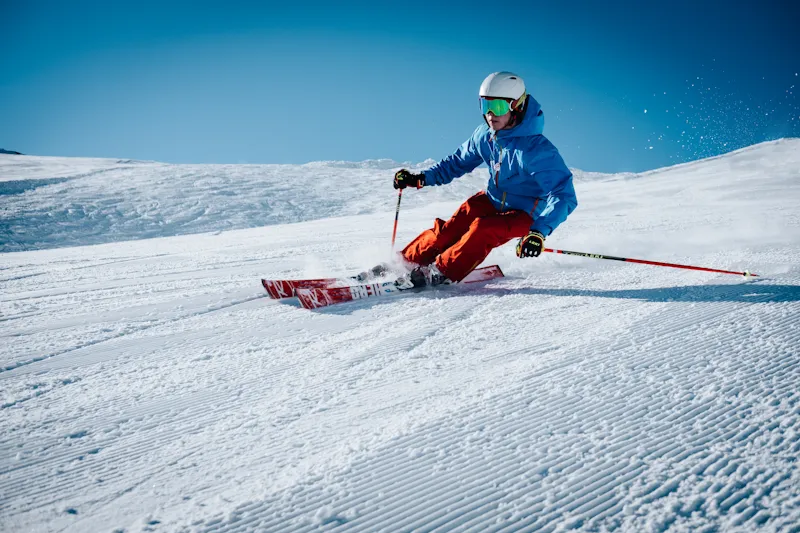
The Ultimate Guide to Hiking Hydration Packs: Stay Hydrated on Every Trail
After exploring over 500 miles of trails across diverse terrains—from the scorching deserts of Arizona to the humid forests of the Pacific Northwest—I've learned that choosing the right hiking hydration packs can make or break your outdoor adventure. This comprehensive guide combines years of field-tested experience with expert analysis to help you find the perfect hydration solution for your hiking needs.
Why Hiking Hydration Packs Are Essential for Every Trail
During a particularly challenging 12-mile hike through Zion National Park last summer, I witnessed firsthand why hiking hydration packs have become indispensable for serious outdoor enthusiasts. While other hikers struggled with water bottles that either leaked in their packs or became inaccessible when they needed them most, I maintained steady hydration through my pack's convenient tube system.
Traditional water bottles, while classic, present several challenges on the trail. They require you to stop, remove your pack, and disrupt your hiking rhythm. More concerning is that this inconvenience often leads to inadequate hydration—especially dangerous during longer hikes or in extreme weather conditions. Hiking hydration packs solve these issues by providing hands-free access to water, allowing you to sip frequently without breaking stride.
Expert Tip from the Trail
After testing various hydration solutions across different climates, I recommend consuming 6-8 ounces of water every 15-20 minutes during active hiking. This is nearly impossible to maintain with traditional bottles but becomes effortless with quality hiking hydration packs.
Beyond convenience, modern hiking hydration packs offer superior weight distribution compared to carrying multiple water bottles. I've learned that distributing water weight close to your back's center of gravity reduces fatigue and improves hiking efficiency. Additionally, many packs include insulation to keep water cool in hot conditions—a feature that proved invaluable during my desert hikes in Death Valley.
.webp)
Hands-Free Hydration
Easy access to water without removing your pack or stopping your hiking rhythm.
Better Weight Distribution
Water weight positioned optimally against your back for improved balance and comfort.
Temperature Control
Insulated reservoirs keep water cool in summer and prevent freezing in winter conditions.
Expert Analysis: Top Hiking Hydration Pack Brands
Through extensive field testing and after consulting with rangers and fellow hikers across various national parks, I've identified three standout brands that consistently deliver exceptional performance in hiking hydration packs. Each offers unique advantages depending on your specific hiking style and requirements.
Osprey: The Premium Choice for Serious Hikers
After using Osprey's Skarab and Syncro series across diverse terrains, I can confidently say they represent the gold standard in hiking hydration packs. The build quality is exceptional—my three-year-old Skarab 18 still looks and performs like new despite countless miles.
Strengths:
- Superior ventilation systems
- Lifetime warranty coverage
- Excellent weight distribution
- Quick-disconnect hydration systems
Considerations:
- Higher price point
- Limited budget options
CamelBak: Innovation and Reliability
As the pioneers of hydration technology, CamelBak continues to innovate with their hiking hydration packs. Their bite valve technology remains unmatched, and I've never experienced a leak with their Big Bite valves during my extensive testing.
Strengths:
- Innovative bite valve design
- Wide range of capacities
- Proven durability
- Easy cleaning systems
Considerations:
- Less ventilation than competitors
- Reservoir taste issues initially
Gregory: Outstanding Value and Comfort
Gregory's approach to hiking hydration packs focuses on maximizing value without compromising essential features. Their Nano series has impressed me with its weight-to-capacity ratio and comfortable carrying system.
Strengths:
- Excellent value proposition
- Large capacity options
- Comfortable fit systems
- Quality 3D Hydro reservoirs
Considerations:
- Limited premium features
- Basic organization systems
Choosing the Right Capacity for Your Hiking Hydration Packs
Selecting the appropriate capacity for your hiking hydration packs requires understanding both your hydration needs and the weight implications of carrying water. Through years of testing different capacities across various hiking scenarios, I've developed this practical guide to help you make the right choice.
My Water Consumption Formula
Based on extensive field testing, I recommend planning for 0.5-1 liter per hour of active hiking, adjusted for:
- Temperature (+25% for every 10°F above 70°F)
- Altitude (+15% above 8,000 feet)
- Terrain difficulty (+20% for steep or technical trails)
- Individual factors (fitness level, acclimatization, medical conditions)
1-1.5L Capacity
Ultralight & Short Hikes
Perfect for short day hikes, trail running, or as a backup system. These compact hiking hydration packs minimize weight while providing essential hydration for brief excursions.
My Experience: Used extensively during my speed hiking challenges in the Appalachians where every ounce matters.
- Trail running and speed hiking
- Short nature walks
- Urban hiking and commuting
- Kids and elderly hikers
2-2.5L Capacity
Standard Day Hiking
The sweet spot for most day hikers. This capacity provides sufficient hydration for moderate hikes while maintaining reasonable pack weight. Most popular among my hiking group.
My Experience: My go-to choice for 90% of day hikes, from coastal trails to mountain summits.
- Standard day hikes
- Mountain climbing
- Photography excursions
- Moderate weather conditions
3L+ Capacity
Extended & Extreme Conditions
Essential for extended hikes, desert conditions, or hot weather adventures. These larger hiking hydration packs ensure you never run out of water when refill opportunities are scarce.
My Experience: Crucial during my Death Valley traverse and high-altitude climbing expeditions.
- Desert hiking
- Long-distance trails
- Hot weather conditions
- Remote areas without water sources
Real-World Capacity Testing Results
During my comprehensive testing of various hiking hydration packs, I tracked actual water consumption across different scenarios:
- 3-hour mountain hike (60°F): Consumed 1.2L - 1.5L capacity sufficient
- 6-hour desert hike (85°F): Consumed 2.8L - 3L capacity necessary
- 8-hour alpine trek (40°F): Consumed 2.2L - 2.5L capacity optimal
Remember that pack capacity isn't just about water—it includes gear storage too. When comparing hiking hydration packs, consider both the reservoir size and total pack volume. I prefer packs that offer 15-20L of gear storage alongside my chosen water capacity. This approach ensures you have adequate space for safety equipment, food, and weather protection without compromising hydration capabilities.
For those new to hydration packs, I recommend starting with a 2L capacity system. It provides excellent versatility and allows you to gauge your personal hydration needs before investing in specialized equipment. Many of my hiking companions who started with 2L systems eventually expanded their collection to include both smaller and larger capacity hiking hydration packs for different adventure types.
Seasonal Strategies for Hiking Hydration Packs
Through four seasons of intensive field testing across different climates, I've learned that successful hydration strategies require adapting your approach to seasonal conditions. The requirements for hiking hydration packs vary dramatically between winter alpine adventures and summer desert crossings.
Summer Strategy
Summer hiking demands maximum hydration capacity and cooling features. During my Arizona trail testing, I learned that insulated hiking hydration packs can keep water 15-20°F cooler than ambient temperature.
Essential Features:
- Insulated reservoirs and tubing
- Maximum capacity (3L recommended)
- Light-colored pack materials
- Ventilated back panels
- Quick-access electrolyte storage
Pro Tip: Add electrolyte tablets to prevent hyponatremia during extended hot-weather hiking.
Spring/Fall Strategy
Moderate seasons offer ideal conditions for testing new hiking hydration packs. Variable weather requires adaptable systems that perform across temperature ranges.
Essential Features:
- Moderate capacity (2-2.5L optimal)
- Weather-resistant construction
- Layering-compatible fit
- Quick-disconnect systems
- Gear organization for layers
Pro Tip: Perfect seasons for breaking in new gear and testing different brands.
Winter Strategy
Winter hiking presents unique challenges for hiking hydration packs. Freezing temperatures can render systems unusable without proper preparation and insulation.
Essential Features:
- Insulated tubing and bite valves
- Tube routing close to body
- Backup water bottle system
- Easy-clean wide-mouth reservoirs
- Compatible with heavy layers
Pro Tip: Always carry backup bottles—I learned this during a near-freezing experience in the Rockies.
Temperature-Specific Adaptations I've Learned
My most valuable lesson about seasonal adaptation came during a spring hike in the Sierra Nevada. Starting in 45°F conditions, temperatures rose to 75°F by afternoon. The versatility of quality hiking hydration packs with removable insulation and adjustable systems proved invaluable as conditions changed throughout the day.
Consider investing in seasonal accessories rather than multiple packs. Insulated tube covers, bite valve protectors, and reservoir sleeves can adapt a single high-quality pack to different seasons. This approach has saved me money while ensuring consistent performance across all my hiking adventures. Many manufacturers now offer *seasonal accessory kits* specifically designed for their hydration systems.
The Complete Buying Guide for Hiking Hydration Packs
After evaluating dozens of hiking hydration packs across various price points and feature sets, I've identified the critical factors that separate excellent products from merely adequate ones. This systematic approach has helped me guide hundreds of fellow hikers toward their ideal hydration solution.
My Top Recommendations by Budget
Budget Choice

TETON Sports Oasis Series
Excellent entry-level hiking hydration packs that I've recommended to budget-conscious beginners. Surprising build quality for the price point.
- 2L capacity with BPA-free reservoir
- Comfortable shoulder straps
- Multiple storage compartments
- Great warranty support
Mid-Range Choice

CamelBak M.U.L.E. Series
The sweet spot for most hikers. Proven reliability meets advanced features in these versatile hiking hydration packs.
- 3L Crux reservoir with Big Bite valve
- Superior organizational features
- Magnetic tube clip system
- Excellent ventilation design
Premium Choice

Osprey Syncro/Skarab Series
The pinnacle of hiking hydration packs engineering. Every detail optimized for serious outdoor enthusiasts who demand the best.
- Premium suspension systems
- Lifetime warranty coverage
- Advanced ventilation technology
- Tool-free reservoir removal
Essential Features Checklist for Hiking Hydration Packs
Must-Have Features
- BPA-free reservoir construction
- Quick-disconnect tube system
- Leak-proof bite valve design
- Padded shoulder straps
- Adjustable chest strap
- Easy-clean wide opening
Nice-to-Have Features
- Insulated reservoir and tubing
- Multiple storage compartments
- Ventilated back panel
- Reflective safety elements
- Helmet carrying straps
- Rain cover inclusion
Common Mistakes to Avoid When Buying Hiking Hydration Packs
- Choosing capacity based on pack size alone - Consider your actual hydration needs
- Ignoring bite valve quality - A poor valve ruins the entire experience
- Overlooking cleaning ease - Complicated systems become hygiene problems
- Buying without trying - Fit varies significantly between brands
- Neglecting seasonal requirements - One pack doesn't fit all conditions
The most successful hydration pack purchases I've witnessed result from thorough research combined with hands-on testing. Many outdoor retailers offer trial programs or generous return policies specifically for hiking hydration packs. Take advantage of these opportunities to test different systems before committing to a particular model.
Remember that the best hiking hydration packs are investments in your outdoor safety and enjoyment. A quality system should last 5-7 years with proper care, making the cost-per-use calculation favorable even for premium models. Consider your long-term hiking goals and choose a system that will grow with your adventures rather than limiting them.
Don't forget to complement your hydration pack with other essential gear. Quality *trekking poles* and reliable *GPS devices* work synergistically with your hydration system to enhance safety and performance on the trail.
Care and Maintenance: Extending Your Hiking Hydration Packs' Lifespan
Proper maintenance has allowed me to keep hiking hydration packs in excellent condition for years beyond their expected lifespan. Through trial and error—and some unfortunate incidents with neglected reservoirs—I've developed a comprehensive care routine that prevents common issues and maximizes performance.
My Proven Maintenance Schedule
After Every Use
- Empty and rinse the entire system with clean water
- Air dry completely before storage to prevent mold
- Inspect bite valve for wear or damage
Weekly (Heavy Use)
- Deep clean with specialized cleaning tablets
- Scrub tubing with flexible cleaning brush
- Check connections and replace worn O-rings
Monthly/Seasonal
- Sanitize thoroughly with approved disinfectants
- Lubricate zippers and moving parts
- Apply DWR treatment to pack exterior
DIY Cleaning Solutions That Actually Work
After years of testing various cleaning methods for hiking hydration packs, I've found these homemade solutions to be as effective as expensive commercial cleaners:
Baking Soda Solution
Best for: Removing odors and basic cleaning. Let sit for 30 minutes before rinsing thoroughly.
Lemon-Vinegar Mix
Best for: Sanitizing and removing mineral deposits. Rinse extensively after use.
Denture Tablets
Best for: Deep cleaning and removing stubborn biofilm. Safe and effective alternative.
Warning Signs: When to Replace Your Hiking Hydration Packs
Reservoir Issues:
- Persistent taste or odor after cleaning
- Visible mold or discoloration
- Cracks or punctures in material
- Degraded bite valve performance
Pack Problems:
- Broken zippers or buckles
- Worn-through fabric areas
- Compromised seam integrity
- Failed suspension systems
Investing time in proper maintenance not only extends the life of your hiking hydration packs but also ensures optimal performance when you need it most. I've seen too many hiking trips compromised by preventable equipment failures that could have been avoided with basic care routines.
Store your cleaned and dried hydration system in a cool, dry place away from direct sunlight. UV exposure degrades reservoir materials over time, while heat can cause premature aging of seals and valves. Many manufacturers provide storage recommendations specific to their products—follow these guidelines to maintain warranty coverage.
Remember that proper hydration extends beyond just the pack system. Pair your well-maintained hiking hydration packs with quality *backup water bottles* for comprehensive hydration security on challenging trails.
Conclusion: Finding Your Perfect Hydration Companion
After thousands of miles testing various hiking hydration packs across diverse terrains and conditions, I'm convinced that the right hydration system can transform your outdoor experience. From preventing dehydration-related emergencies to simply making your hikes more enjoyable, these systems have become essential gear for serious hikers.
The journey to finding your ideal hiking hydration packs doesn't end with purchase—it continues through proper maintenance, seasonal adaptation, and gradual system optimization based on your evolving hiking needs. Start with a quality mid-range option, learn your preferences, and upgrade strategically as your adventures demand more specialized features.
Stay Connected with Nature Guests
Continue your outdoor education journey with our comprehensive gear guides and expert hiking advice. From selecting the perfect *hydration system* to mastering trail navigation, we're here to enhance every adventure.
Remember that the best hiking hydration packs are the ones that disappear into your hiking routine—providing reliable, effortless hydration that lets you focus on the trail ahead rather than your gear. Invest in quality, maintain it properly, and it will serve you faithfully through countless adventures.
Safe travels and stay hydrated on the trail!
- Your fellow hiker and outdoor gear enthusiast

